1. Insurance Companies
1.1. Refuse to reimburse for incorrectly coded diagnoses
1.1.1. ICD 10 implementation must be correct before insurance will reimburse approprately
1.2. May receive penalties from Medicare/Medicaid due to incorrect documentation
1.2.1. Insurance companies no longer pay for readmission based on CMS clinical quality measures (Walter & Tingley, n.d.)
2. Patients
2.1. Not receiving best possible care
2.1.1. When clinical staff have to spend longer amounts of time documenting, they are unable to give their full attention to the patient that can sometimes lead to missed cues from the patient
2.2. Unable to provide information to other healthcare providers.
2.2.1. Patients seeing multiple providers may not provide an accurate medical history including medications prescribed
2.3. Possible harm due to medication errors
2.3.1. the integration of bar code scanning for medications and patient identification has been beneficial but has not been instituted in many facilities
2.4. Increased wait times in emergency rooms
2.4.1. Increased time required to input orders, information, and document slows down clinical staff creating a bottleneck situation
3. Physicians
3.1. Order errors or order delays
3.1.1. Usability for ordering specific tests, medications, or procedures unavailable
3.2. Clinical decision making hindered by the inability to access test results
3.2.1. Workflow screens lacking patient information or test results
3.3. Delay in patient care due inability to send or receive patient information in a timely manner
3.3.1. When radiology software or laboratory software dose not have an interface with the EMR, clinical decisions are delayed
4. Nurses
4.1. Incomplete or inaccurate documentation
4.1.1. Specific medication, procedure, or test information not available as choices
4.2. More time spent charting and less time in patient care
4.2.1. EHR utilization can cause double and triple charting for the nurse
4.3. No time to incorporate best practices
4.3.1. EBP's change regularly causing continuous updates for EHR systems
4.4. Incomplete patient histories
4.4.1. EHR database missing medications, surgical history options, or medical condition options
5. Administration
5.1. Unable to chart correctly for charges
5.1.1. If it's not charted, it didn't happen...and the provider cannot charge for it
5.2. Statistical reports used in decision making may be unreliable
5.2.1. Administration may not know the true number of patients, acuity levels, and workflow problems due to errors in the system
5.3. May base staffing decisions on inaccurate information
5.3.1. Staffing ratios, budgeting, and other management decision based on information pulled from the EHR
6. Developers
6.1. Lack clinical knowledge to develop proper workflow
6.1.1. IT employees do no understand medications, procedures, or clinical processes and the time/information needed to complete those tasks
6.2. Unable to set up input/output work screens with full potential of time utilization
6.3. Lack of knowledge concerning radiology, laboratory, medication, and procedural information needed to make clinical decisions
6.3.1. Developers need to understand the flow of physician orders, nursing interventions, and ancillary department workflows to coordinate care and information
7. Population Health Management
7.1. Unable to obtain accurate demographic information on patients
7.1.1. A large amount of statistical data could be lost due to lack of EHR's ability to capture demographic information
7.2. Statistical information pulled from EMR data may be skewed or lacking complete information
7.2.1. Ultimate goal would be to have state or nationwide database that has interface will all health care provider systems
8. HINF522:Healthcare Informatics and Clinical Delivery System Summer I Excelsior College Amanda Paschal Clinical Map
9. Implementations Needed
9.1. Integrate phsyicians, nurses, and members from all ancilliary staff as stakeholders into the EHR decision making; no doing so can cause significant delays (Panyard, Ramly, Dean, & Bartles, 2018)
9.1.1. Each staff member has the ability to contribute information to significantly increase workflow and reduce redundant documentation
9.2. Create a committee of clinical staff to oversee the creation of requirements and workflow information to be provided to developers
9.2.1. This should include physicians, nurses, radiology staff, laboratory staff, in addition to IT staff
9.3. Ensure the software chosen will meet all of the requirements put forth by the clinical committee
9.3.1. Clinicians need 1) an integrated view of the patient 2) evidence-based decision support and feedback 3) linkage between research and clinical care 4) adequate HIT integration into clinical practice (Staggers, 2010)
9.4. Maintain a committee consisting of clinical staff members from all departments to find and correct system errors as well as introducing improvement ideas
9.4.1. The same committee should report and find solutions for missing information or missing opportunities as well as incorrect data or unnecessary/missing clinical decision supports
9.5. Provide adequate training and cognitive support during and after implementation
9.5.1. Training should be ongoing even after initial training; refresher courses should be required annually to include updates and system changes
9.6. Create EHR that has the ability to evolve with changing equipment, interfaces, and other needs..
9.6.1. EHR must have the ability to grow and adapt to new systems including the ability to interface with outside systems
